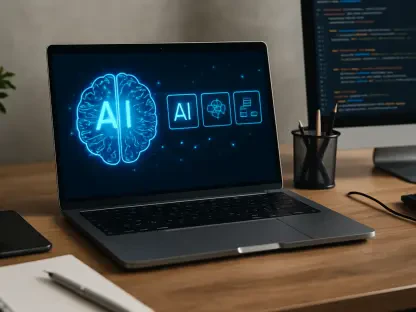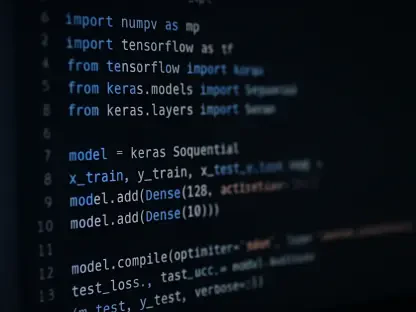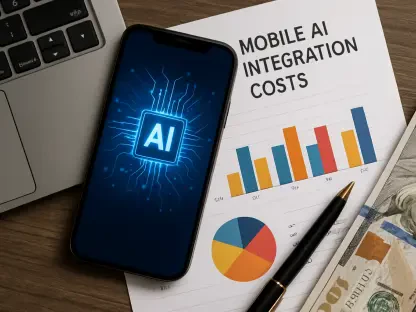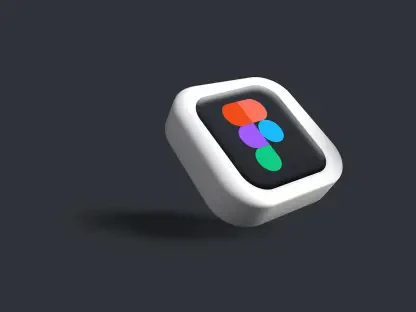Anand Naidu is our resident Development expert. He is proficient in both frontend and backend and provides deep insights into various coding languages. In this interview, we will discuss the concept of vibe coding, how it emerged, its popularity, and its key differences from traditional coding methods. Additionally, we’ll delve into the potential benefits and risks of vibe coding, and how professional developers can leverage it to enhance their workflow.
Can you explain what vibe coding is and how it differs from traditional coding methods?
Vibe coding refers to the practice of using AI to handle the more routine or tedious aspects of coding, allowing developers to focus on creative problem-solving and higher-level design. Unlike traditional coding, which requires manual input and meticulous attention to detail throughout the entire process, vibe coding leverages AI tools to generate or assist with code, streamlining development and potentially accelerating project timelines.
How did the term ‘vibe coding’ come about, and who coined it?
The term ‘vibe coding’ was coined by a former OpenAI founder who described how using AI in his coding process allowed him to offload the more mundane tasks. This concept resonated widely within the tech community, marking a shift in how developers could integrate AI into their workflows for greater efficiency and creativity.
Why do you think the term ‘vibe coding’ has become so popular and attractive in the tech community?
The popularity of the term stems from its catchy and appealing nature, making it sound innovative and cutting-edge. Additionally, it encapsulates the idea of a smoother, more intuitive coding experience facilitated by AI, which is attractive to developers seeking to optimize their workflows and focus on more creative aspects of their projects.
How have marketing teams misused the term ‘vibe coding’ in promoting no-code and low-code tools?
Marketing teams have often co-opted ‘vibe coding’ to make their no-code and low-code tools sound more sophisticated and appealing than they may actually be. They sometimes mislead users into believing these tools can perform the same functions as true vibe coding, without requiring any substantial coding knowledge or experience.
What are some of the key differences between true vibe coding and no-code or low-code development tools?
True vibe coding involves the use of AI to assist with and enhance the coding process, typically by experienced developers who guide the AI and verify its outputs. On the other hand, no-code and low-code tools are designed to allow users to build applications with minimal coding knowledge, often relying on templates and pre-built components that can limit customization and flexibility.
As an experienced developer, what do you see as the primary benefits of vibe coding?
The primary benefits of vibe coding include increased productivity, as AI can handle repetitive tasks, and the ability to focus on more complex and creative aspects of software development. This division of labor can lead to faster development cycles and more innovative solutions, as developers have more time to explore and refine their ideas.
What are the potential risks or downsides associated with vibe coding, particularly for less experienced developers?
The main risks include the potential for generating insecure or suboptimal code, as AI might not always follow best practices or account for all edge cases. Less experienced developers may not have the expertise to identify and correct these issues, leading to vulnerabilities and other problems in the final product.
How do you ensure that the code produced by an AI in vibe coding is secure and reliable?
Ensuring secure and reliable AI-generated code involves rigorous testing and validation. Developers need to review and understand the AI’s output, running tests to ensure the code meets security standards and performs as expected. It’s also crucial to stay informed about AI best practices and continuously monitor the AI’s performance and learning process.
Can you share your thoughts on how vibe coding affects the creative aspects of software development?
Vibe coding can enhance creativity by freeing developers from mundane tasks and enabling them to focus on higher-level design and problem-solving. With more time and mental bandwidth, developers can explore innovative solutions and approaches, push the boundaries of their projects, and bring new and exciting features to life.
How do professional developers use vibe coding to enhance their workflow, and can you provide some examples?
Professional developers use vibe coding to automate repetitive tasks, prototype new features quickly, and streamline complex processes. For example, a developer might use AI to generate boilerplate code, allowing them to focus on customizing and refining specific functionalities. This can lead to faster turnaround times and more polished, creative end products.
What are the specific challenges that junior coders or non-professional developers might face when using vibe coding?
Junior coders or non-professional developers may struggle with understanding and validating AI-generated code, which can lead to security vulnerabilities or suboptimal performance. They might also lack the experience to effectively direct the AI, resulting in code that doesn’t fully meet their needs or expectations.
How important is it to have a human operator who is actually smarter than the AI when using vibe coding tools?
It’s extremely important to have a knowledgeable human operator guiding the AI to ensure the code produced is accurate, secure, and functional. AI can generate plausible but flawed code, and without a skilled developer to oversee the process, the risk of introducing errors or vulnerabilities increases significantly.
Can you discuss the security implications of vibe coding and how it might create vulnerabilities in software?
Vibe coding can introduce security risks if the AI-generated code isn’t properly vetted and tested. AI might overlook security best practices, leading to vulnerabilities like SQL injection or hardcoded secrets. Developers need to be vigilant in reviewing and securing the code to prevent these issues.
What measures can developers take to mitigate the risks of insecure or unoptimized code produced by AI?
To mitigate risks, developers should conduct thorough code reviews, implement automated security testing, and apply best coding practices. Continuous monitoring and updates are also essential to address any newly discovered vulnerabilities and ensure the AI-generated code remains secure and optimized.
How does vibe coding potentially accelerate software development, and what are the benefits for bringing products to market faster?
Vibe coding accelerates development by automating tedious tasks and enabling quicker iterations and prototyping. This can reduce time-to-market, allowing companies to launch products faster and respond more quickly to market demands, gaining a competitive edge.
How should developers approach the validation and testing of AI-generated code in vibe coding?
Developers should approach validation and testing with a rigorous mindset, treating AI-generated code like any other code. This involves unit testing, integration testing, security testing, and peer reviews to ensure the code is robust, secure, and meets the project requirements.
What is your opinion on using AI for creative coding tasks versus mundane or repetitive ones?
Using AI for mundane or repetitive tasks is highly beneficial as it frees up developers for more creative work. However, AI can also support creative tasks by generating initial ideas or prototypes that developers can refine and build upon, potentially sparking new innovations and solutions.
Do you think AI tools can democratize coding and make it more accessible to newcomers, and why?
Yes, AI tools have the potential to democratize coding by lowering barriers to entry and making it easier for newcomers to build functional applications without deep coding knowledge. This accessibility can empower more people to create and innovate, leading to a more diverse and dynamic tech landscape.
How do you see AI transforming the learning process for coding and other technical skills?
AI can transform the learning process by providing personalized, interactive learning experiences, offering real-time feedback, and adjusting to individual learning paces. This approach can make coding education more engaging, effective, and tailored to the needs of each student.
What are the key takeaways from the opinions of different professional developers on vibe coding that you reached out to?
The key takeaways are that while vibe coding can significantly enhance productivity and creativity for experienced developers, it also poses risks, especially regarding security and code quality. There’s a consensus that human oversight is essential, and that vibe coding is not yet suitable for beginners without substantial guidance and knowledge.
What would you recommend for someone new to coding who wants to try vibe coding?
For someone new to coding, I recommend starting with traditional coding to build a strong foundation of skills and understanding. Once they are comfortable with the basics, they can begin experimenting with vibe coding, using it as a tool to augment their abilities rather than a replacement for foundational knowledge.
From your perspective, what are the future prospects of vibe coding in the software development industry?
The future of vibe coding looks promising, as AI continues to improve and become more integrated into development workflows. It has the potential to revolutionize how software is created, making the process more efficient and opening up new possibilities for innovation. However, it will be crucial to balance AI capabilities with human oversight to ensure quality and security remain paramount.









